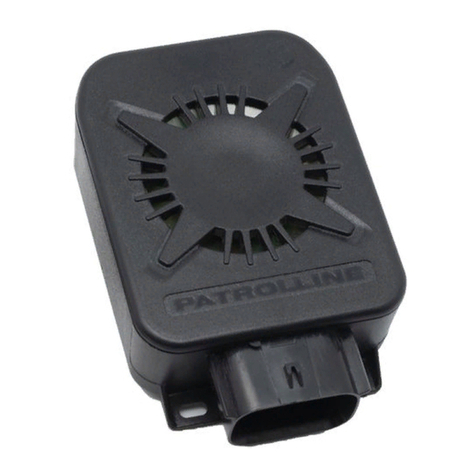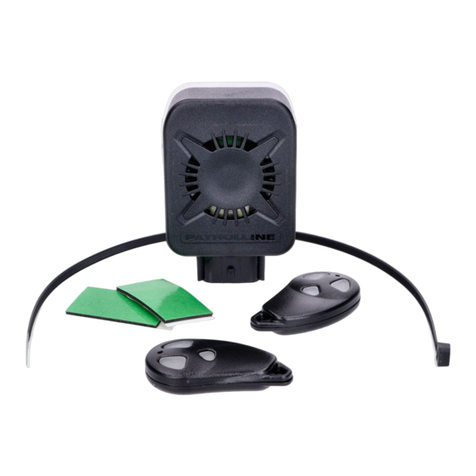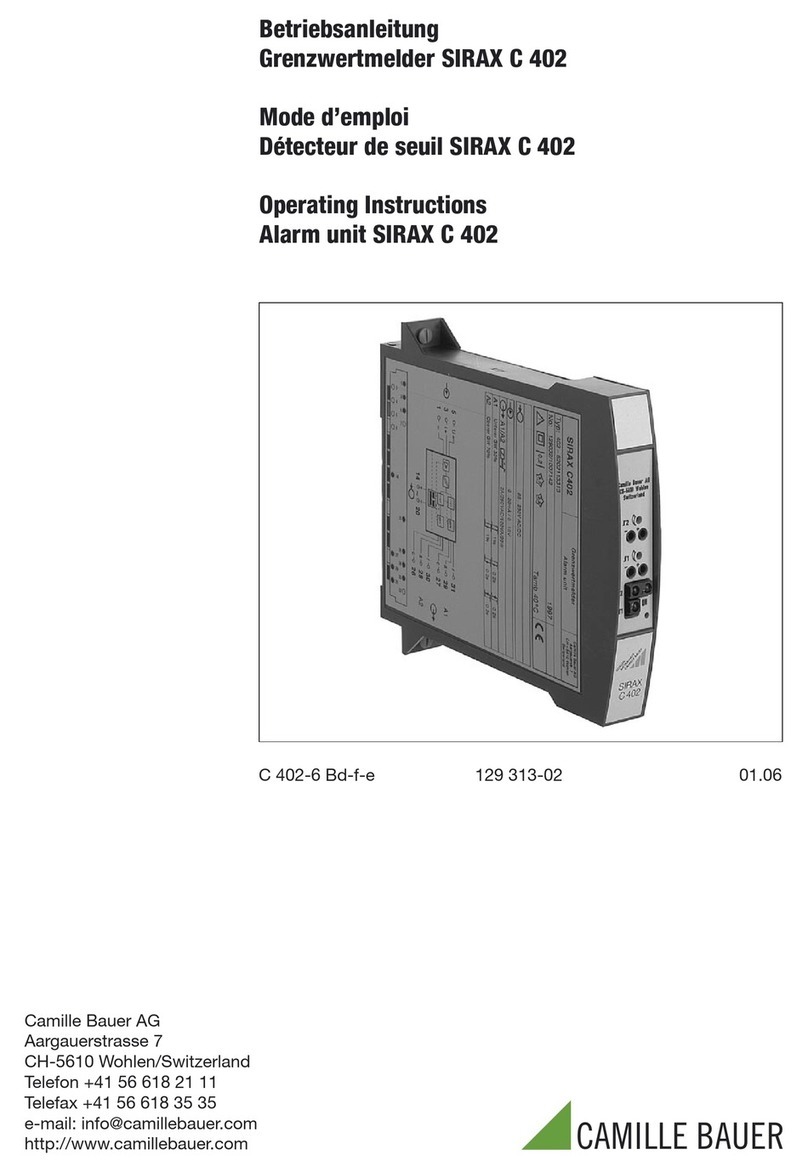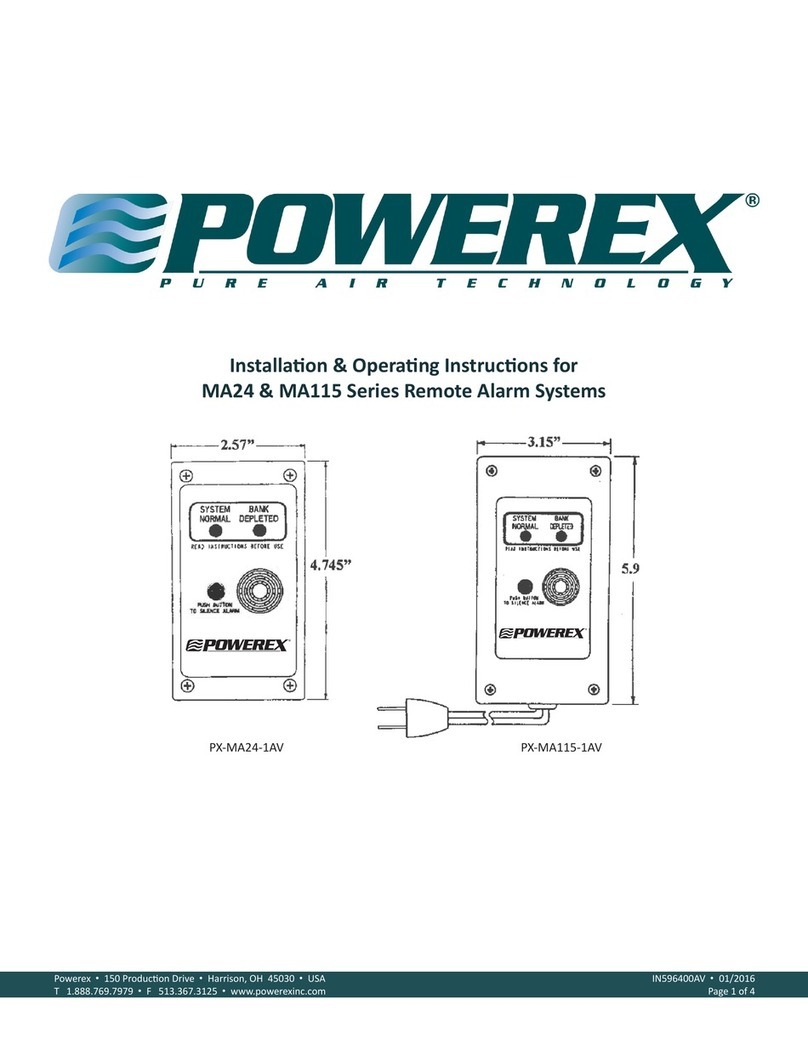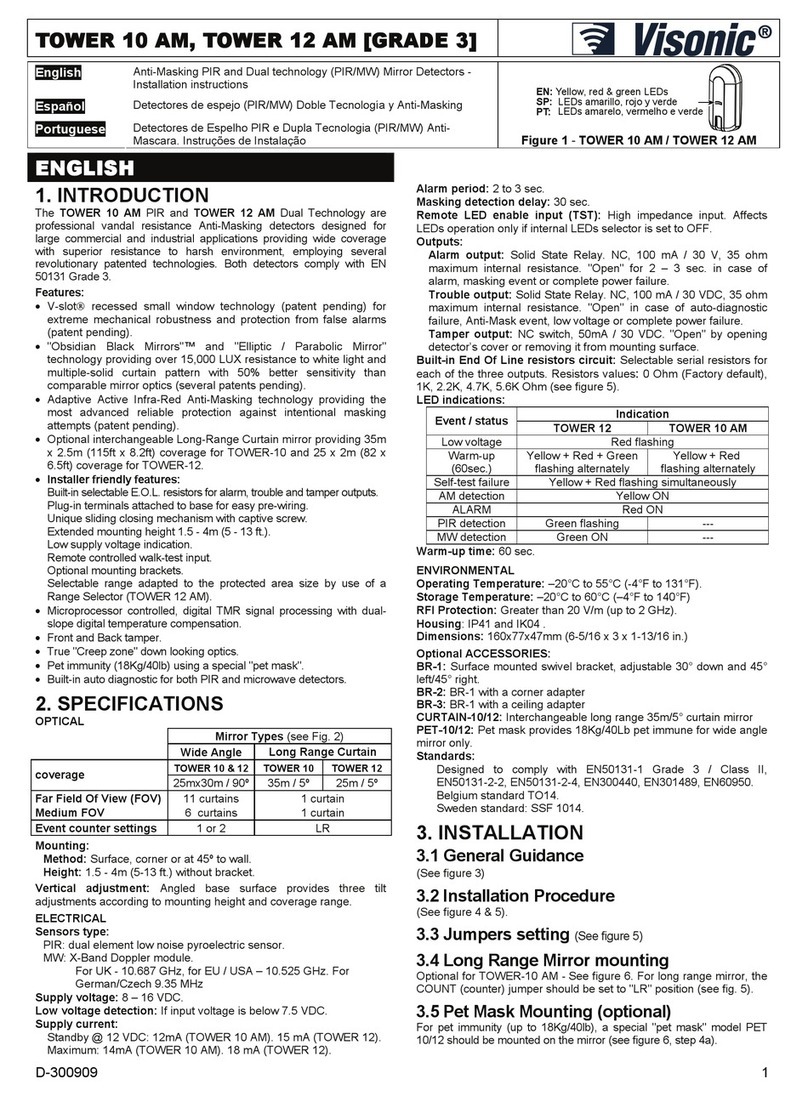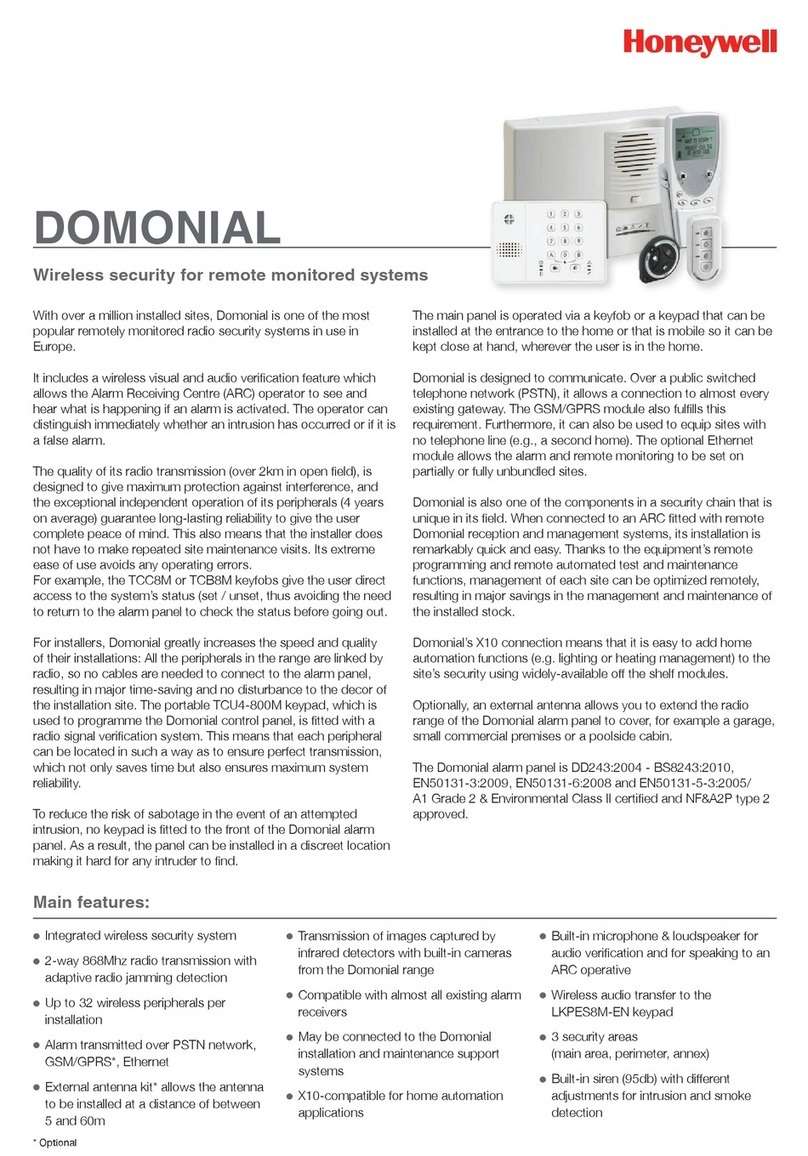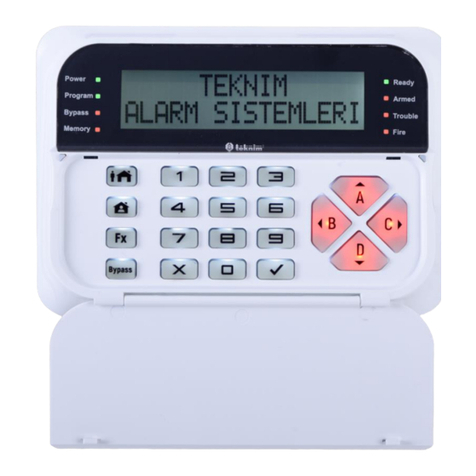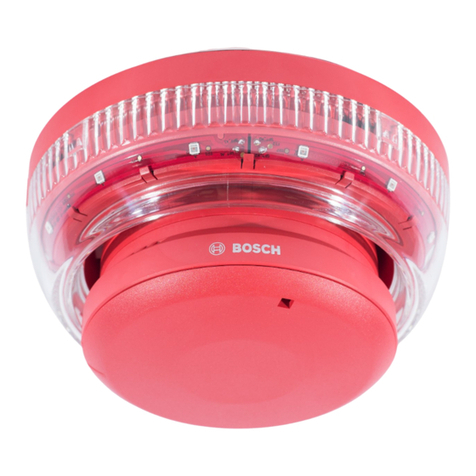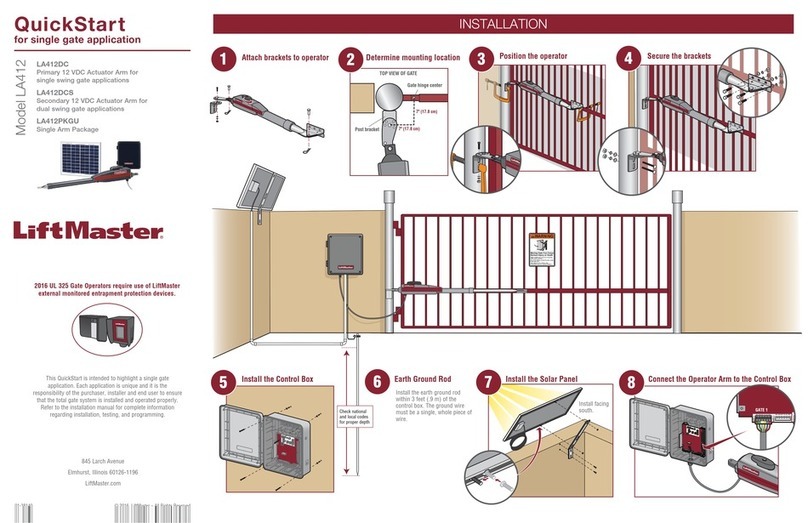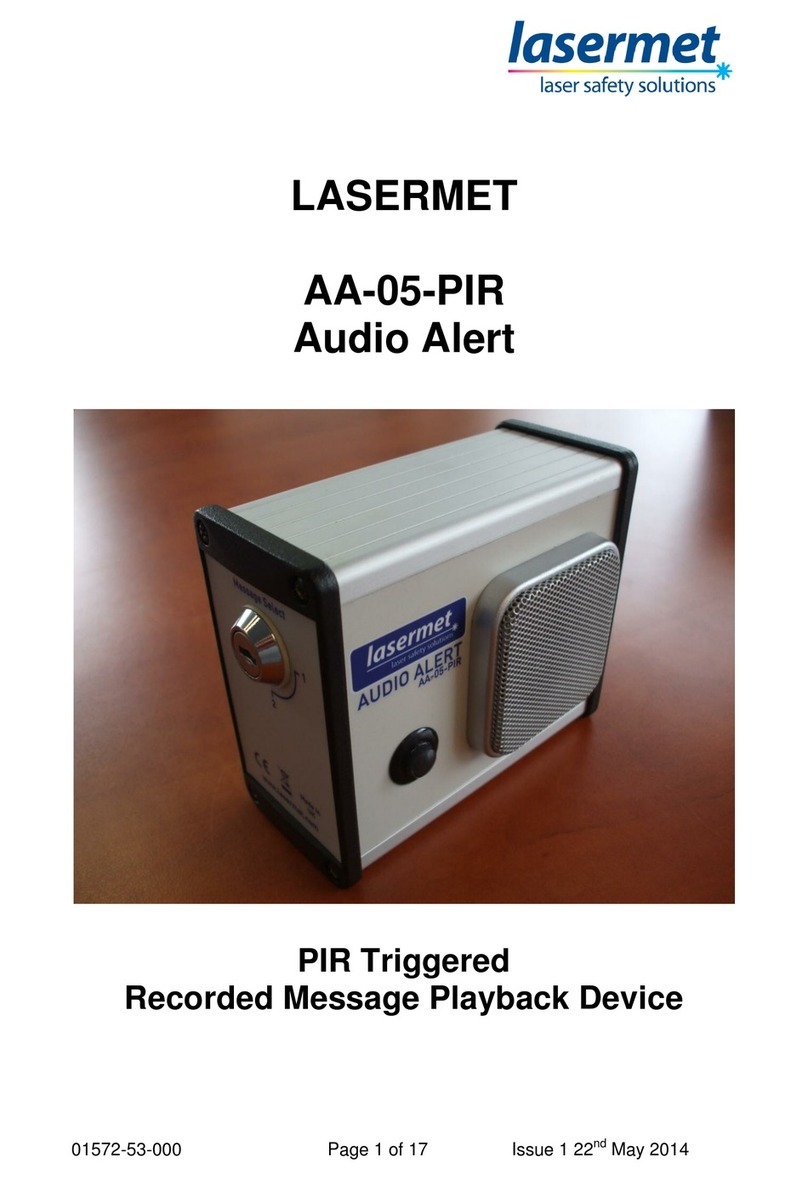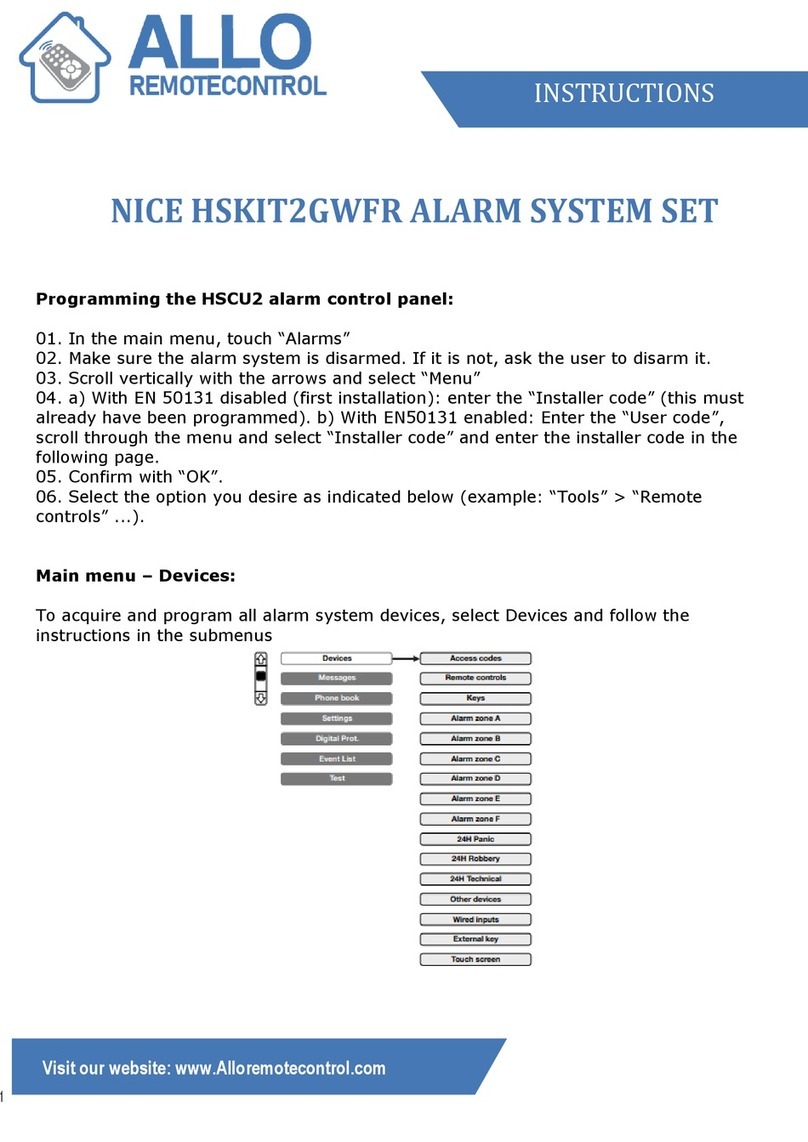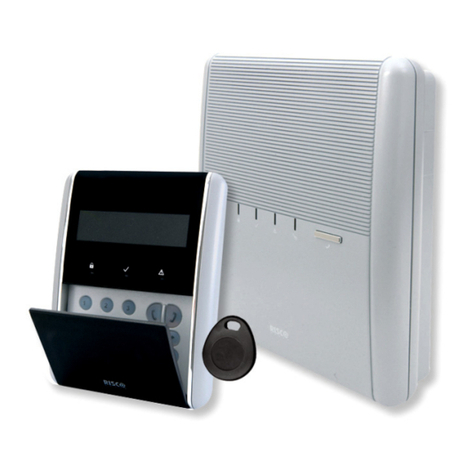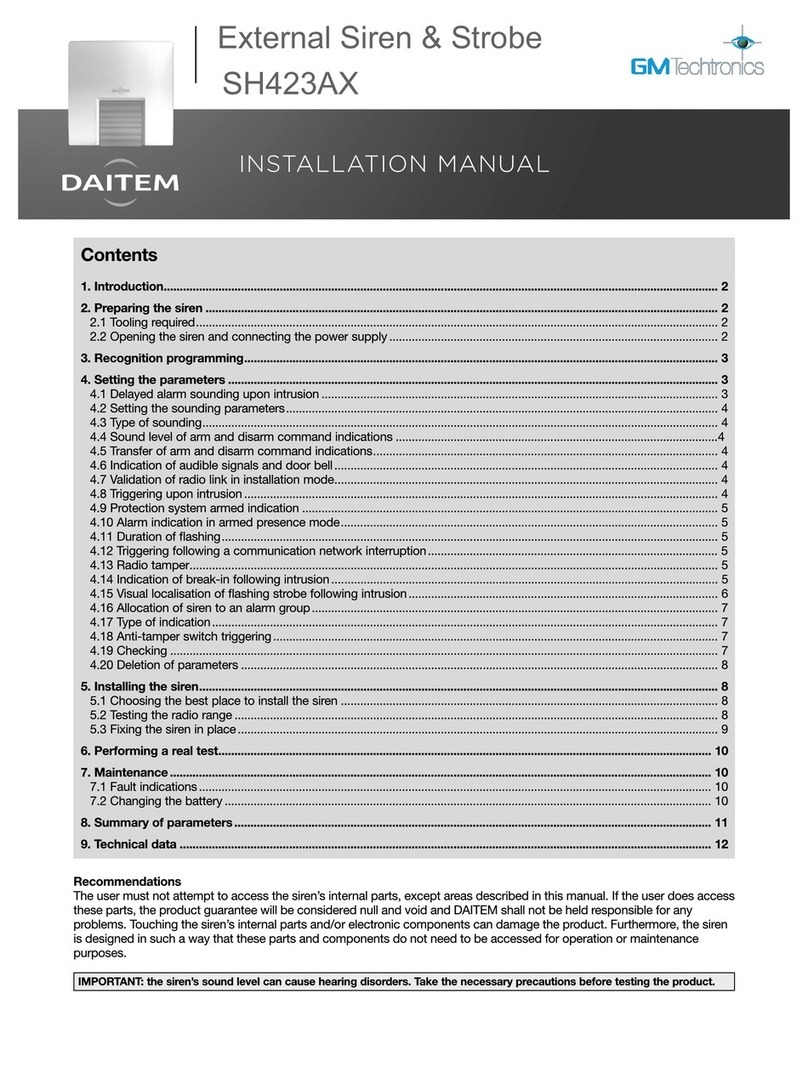PATROLLINE HPS 548N User manual

\
HPS 548N REL.00 PAGE 1OF 22 GIU 2008 CODE: 00-99-0548N10
HPS 548N
Thank you for choosing
one of our products.
We ask you to read carefully this manual and save it
for any future reference.
Hps 548N is an alarm that can be used for the
protection of mopeds, scooters or motorcycles.

\
HPS 548N REL.00 PAGE 2OF 22 GIU 2008 CODE: 00-99-0548N10
I
IN
ND
DE
EX
X
I
In
nd
de
ex
x
...................................................................................... 2
p
pr
ro
od
du
uc
ct
td
de
es
sc
cr
ri
ip
pt
ti
io
on
na
an
nd
dc
cy
yb
be
er
rw
wo
or
rk
ki
in
ng
g
................................... 3
w
wo
or
rk
ki
in
ng
gb
by
yr
re
em
mo
ot
te
ec
co
on
nt
tr
ro
ol
l
..................................................... 4
s
si
ir
re
en
ne
ex
xc
cl
lu
us
si
io
on
n
....................................................................... 5
a
al
le
er
rt
ts
st
ta
at
te
e
................................................................................ 5
a
al
la
ar
rm
m
...................................................................................... 5
a
ac
co
ou
us
st
ti
ic
cl
li
im
mi
it
ta
at
ti
io
on
nf
fo
or
rc
co
on
ns
se
ec
cu
ut
ti
iv
ve
ea
al
la
ar
rm
ms
s
.............................. 5
p
pa
an
ni
ic
ca
al
la
ar
rm
m
............................................................................. 5
a
al
la
ar
rm
mm
me
em
mo
or
ry
y
........................................................................ 6
b
ba
at
tt
te
er
ry
yb
ba
ac
ck
ku
up
p
........................................................................ 6
s
st
ta
at
te
em
me
em
mo
or
ry
y
.......................................................................... 6
u
us
se
eo
of
ft
th
he
es
se
ec
cr
re
et
tc
co
od
de
eo
of
fr
re
el
le
ea
as
se
e
............................................. 6
c
ch
ha
an
ng
ge
eo
of
ft
th
he
es
se
ec
cr
re
et
tc
co
od
de
eo
of
fr
re
el
le
ea
as
se
e
........................................ 7
p
pr
ro
og
gr
ra
am
mm
ma
ab
bl
le
ef
fu
un
nc
ct
ti
io
on
ns
s
......................................................... 7
c
ch
he
ec
ck
ko
of
ft
th
he
ep
pr
ro
og
gr
ra
am
mm
me
ed
df
fu
un
nc
ct
ti
io
on
ns
s
........................................ 9
d
de
es
sc
cr
ri
ip
pt
ti
io
on
no
of
ft
th
he
ep
pr
ro
og
gr
ra
am
mm
me
ed
df
fu
un
nc
ct
ti
io
on
ns
s
................................9
s
sh
ho
oc
ck
ks
se
en
ns
so
or
ra
ad
dj
ju
us
st
te
em
me
en
nt
t
......................................................12
c
ca
an
nc
ce
el
ll
la
at
ti
io
on
no
of
ft
th
he
ep
pr
ro
og
gr
ra
am
mm
me
ed
df
fu
un
nc
ct
ti
io
on
ns
s
............................13
n
ne
ew
wr
re
em
mo
ot
te
ec
co
on
nt
tr
ro
ol
ls
sl
le
ea
ar
rn
ni
in
ng
g
................................................13
a
al
la
ar
rm
mm
ma
ai
in
nt
te
en
na
an
nc
ce
e
................................................................14
m
mo
ou
un
nt
ti
in
ng
gi
in
ns
st
tr
ru
uc
ct
ti
io
on
ns
s
...........................................................15
s
sc
ch
he
em
me
eo
of
fc
co
on
nn
ne
ec
ct
ti
io
on
nw
wi
it
th
hg
ge
en
ne
er
ri
ic
cw
wi
ir
ri
in
ng
g
............................16
b
bl
lo
oc
ck
ke
en
ng
gi
in
ne
ef
fo
or
rm
mo
op
pe
ed
d
........................................................17
b
bl
lo
oc
ck
ke
en
ng
gi
in
ne
ef
fo
or
rm
mo
ot
to
or
rc
cy
yc
cl
le
es
s
...............................................18
m
mo
ou
un
nt
ti
in
ng
gw
wi
it
th
hs
sp
pe
ec
ci
if
fi
ic
cw
wi
ir
ri
in
ng
g
..............................................19
s
su
ug
gg
ge
es
st
ti
io
on
ns
sf
fo
or
rt
th
he
ei
in
ns
st
ta
al
ll
le
er
r
...................................................20
o
op
pt
ti
io
on
na
al
lm
mo
od
du
ul
le
es
s
...................................................................20
t
te
ec
ch
hn
ni
ic
ca
al
lf
fe
ea
at
tu
ur
re
es
s
..................................................................21
notes.....................................................................................22
d
de
ec
cl
la
ar
ra
at
ti
io
on
no
of
fc
co
on
nf
fo
or
rm
mi
it
ty
y
......................................................22

\
HPS 548N REL.00 PAGE 3OF 22 GIU 2008 CODE: 00-99-0548N10
User’s manual
Thank you for choosing one of our products.
P
PR
RO
OD
DU
UC
CT
TD
DE
ES
SC
CR
RI
IP
PT
TI
IO
ON
NA
AN
ND
DC
CY
YB
BE
ER
RW
WO
OR
RK
KI
IN
NG
G
HPS 548N is an innovative alarm system for motorcycles and scooters endowed with rolling code remote control and with
many possibilities of customisation.
It has all the “typical” features of the high class models and some extra functions, as: emergency blinkers, “smart” indicator for
blinkers on and customisable pin code for release, all programmable directly though remote control.
Moreover, it uses the brand new technology CYBER : a special transmitter with identifier integrated.
CYBER is in the meantime a transponder and a remote control. By pressing its buttons, it commands directly the alarm system
(like a remote control); having it on, like a normal business card or other personal object, it arms and disarms the alarm
system.
It is also able to manage the anti-theft and anti-aggression functions (if programmed) checking that the owner is driving the
vehicle and taking otherwise the right precautions.
Automatic functions of CYBER:
If HPS 548N does not receive CYBER for more than 12 seconds, it automatically arms.
If the armed alarm detects the “presence” of” CYBER, it will confirm it by a bi-tonal sound and by a more frequent
flashing of the LED.
To disarm the alarm system, it will be enough to “touch” the vehicle or switch on its ignition key.
The disarmed alarm will confirm the “presence” of CYBER by 3 quick flashings of the LED on the dashboard.
To arm and disarm it is possible to use both the remote control and CYBER.

\
HPS 548N REL.00 PAGE 4OF 22 GIU 2008 CODE: 00-99-0548N10
W
WO
OR
RK
KI
IN
NG
GB
BY
YR
RE
EM
MO
OT
TE
EC
CO
ON
NT
TR
RO
OL
L
ARMING THE ALARM SYSTEM
Press the "A button" of the remote
control or CYBER. The arming will be
confirmed by:
3 acoustic signals (beeps)
3 flashings of the blinkers
Switching on of the LED on the
dashboard
Activation of the electric engine
immobilization.
ALL THE INSTRUCTIONS CONCERNING THE
USE OF THE REMOTE CONTROLS REFER TO
THESE PICTURES
The HPS 548N is endowed with 1
remote control and 1 CYBER
DISARMING THE ALARM SYSTEM
Press the "A button" of the remote
control or CYBER. The disarming will be
confirmed by:
An acoustic signal (beep)
1 long flashing of the blinkers
Switching off of the LED on the
dashboard
Deactivation of the electric engine
immobilization
Signalling of alarm memory –
when needed (indicator lights and
beep).
EMERGENCY RESET:In case of emergency, due to electromagnetic fields or radio frequency interferences, it is possible to
press the button “C” OF CYBER..You will obtain 6 quick transmissions helpful to disarm the alarm or to switch off the anti-theft
and anti-aggression functions (if programmed).
C
B
A

\
HPS 548N REL.00 PAGE 5OF 22 GIU 2008 CODE: 00-99-0548N10
S
SI
IR
RE
EN
NE
EX
XC
CL
LU
US
SI
IO
ON
N
During the first 5 seconds of arming (LED fixed), pressing the “button B” of the remote control it is possible to exclude the
siren operation. Two acoustic signals will confirm that the siren sound has been excluded.
In this case the central unit will signal the alarm state only by the flashing of the indicators lights.
Warning: in case the ignition key is turned on or the “button B” of the remote control is depressed (panic alarm), the
siren sound is restored.
A
AL
LE
ER
RT
TS
ST
TA
AT
TE
E
Once the arming is over (LED fixed), the central unit is ready to signal every attempt of theft. The alert state is signalled by the
flashing of the LED installed on the dashboard.
A
AL
LA
AR
RM
M
In case of effraction, shock, lighting of the console, opening of telealarms (if installed), opening of protected vain or prop-stand,
the system will emit an optic-acoustic signal (indicator lights flashing and siren sound) for 30 seconds.
To interrupt the signalling without disconnecting the alarm, depress the “button B” of the remote control.
To interrupt the signalling and disconnect the system, depress the “button A” of the remote control.
A
AC
CO
OU
US
ST
TI
IC
CL
LI
IM
MI
IT
TA
AT
TI
IO
ON
NF
FO
OR
RC
CO
ON
NS
SE
EC
CU
UT
TI
IV
VE
EA
AL
LA
AR
RM
MS
S
During the alert state, if the alarm sensors notice for 3 consecutive times a cause of alarm, at the fourth cause of alarm the
central unit will exclude the siren signalling the alarm state only with the flashing of the indicator lights. However, during this
phase the electric block of the engine is active.
Warning: in case the ignition key is turned on or the “button B” of the remote control is depressed (panic alarm), the
siren sound is restored.
P
PA
AN
NI
IC
CA
AL
LA
AR
RM
M
5 seconds after arming (LED flashing), depress the “button B” of the remote control: the central unit does a cycle of alarm of 28
seconds. To interrupt the cycle of alarm, depress the “button B” again.

\
HPS 548N REL.00 PAGE 6OF 22 GIU 2008 CODE: 00-99-0548N10
H
HA
AZ
ZA
AR
RD
DF
FU
UN
NC
CT
TI
IO
ON
N
Pushing button “C” of the transmitter it is possible to switch on the 4 blinkers of the motorcycle (Hazard function). The central
unit will alight the blinkers for an indeterminate period. This function is available both with key position in on position and in off
position. To interrupt the blinker’s signaling push again the “C” button. The exclusion of the function will be signaled by a beep.
A
AL
LA
AR
RM
MM
ME
EM
MO
OR
RY
Y
If the central unit records one or more causes of alarm, they are signalled when disarming by a further flashing of the indicator
lights and by a number of “beeps” equal to the happened alarms (max 7 signalling).
B
BA
AT
TT
TE
ER
RY
YB
BA
AC
CK
KU
UP
P
HPS 548N is endowed with buffer batteries that guarantee its operation also in the case the cable that connects the battery to the
electric plant of the vehicle is cut. The battery backup is automatically armed when the black connector of the alarm wiring is
connected.
S
ST
TA
AT
TE
EM
ME
EM
MO
OR
RY
Y
During the alert state, if the alarm is disarmed by the mechanical key or it is detached from the cable harness, when restored it will
“remember” the state in which it was, preventing in this way every attempt of tampering.
U
US
SE
EO
OF
FT
TH
HE
ES
SE
EC
CR
RE
ET
TC
CO
OD
DE
EO
OF
FR
RE
EL
LE
EA
AS
SE
E
It must be used to disconnect the system when the remote controls don't work or are lost and the central unit is still armed:
The code is always a number of 3 figures (from the factory it is: 1-2-3) and it must be composed with the ignition key performing
this procedure (with the alarm armed):
1. Turn on and off the ignition key as many times as the value of the first figure is (1 time in the case of code of factory).
During the composition of the secret code, the LED on the dashboard remains turned on and the siren plays.
Wait for the LED on the dashboard to be OFF.
2. Turn on and off the ignition key as many times as the value of the second figure is (2 times in the case of code of factory)

\
HPS 548N REL.00 PAGE 7OF 22 GIU 2008 CODE: 00-99-0548N10
3. Wait for the LED on the dashboard to be OFF.
4. Turn on and off the ignition key as many times as the value of the third figure is (3 times in the case of code of factory)
If the operation is correct, after the third figure the system is disarmed.
C
CH
HA
AN
NG
GE
EO
OF
FT
TH
HE
ES
SE
EC
CR
RE
ET
TC
CO
OD
DE
EO
OF
FR
RE
EL
LE
EA
AS
SE
E
This operation allows to personalize the secret code of release from the one of factory (1-2-3) to the desired one, following this
procedure:
1. By the ignition key, compose the old secret code as described in the previous paragraph.
2. Wait for 4 flashes of the indicators lights as confirmation that the old code of release is correct.
3. Turn on and off the ignition key as many times as the value of the first figure that you want to modify is.
4. During the composition of the secret code, the LED on the dashboard remains turned on.
5. Wait for the LED on the dashboard to be OFF.
6. Turn on and off the ignition key as many times as the value of the second figure that you want to modify is.
7. Wait for the LED on the dashboard to be OFF.
8. Turn on and off the ignition key as many times as the value of the third figure that you want to modify is.
If the operation is correct, after the third figure the alarm will emit a series of beeps and it will make the LED flashing as
confirmation that the new code of release has been memorized and has replaced the previous one.
If the procedure is not correct, the alarm will emit a beep but it won't turn on the LED of the vehicle and the code of release won't
result changed.
P
PR
RO
OG
GR
RA
AM
MM
MA
AB
BL
LE
EF
FU
UN
NC
CT
TI
IO
ON
NS
S
Hps 548N has the possibility to modify the most common features by following this procedure:
1. With the system disarmed (LED off), compose the “secret code of release” by the ignition key (see paragraph “Use of the
Secret Code Of Release”).
At the end, the indicator lights will quickly flash to confirm that the code of release is correct.
2. Compose by the ignition key the figure 4 (turn on and off the ignition key for 4 times consecutively).

\
HPS 548N REL.00 PAGE 8OF 22 GIU 2008 CODE: 00-99-0548N10
A beep will confirm that the modification procedure is started.
3. Depress in the same time the “button A” and the “button B” of the remote control.
Maintain the buttons depressed until you get the beeps corresponding to the function you want to modify.
Once reached the position that you want to modify, release the buttons of the remote control. After few seconds:
If the LED remains turned on, it confirms the activation of the corresponding function. Or
If the LED remains off, it confirms the deactivation of the corresponding function.
To modify more functions, it is necessary to repeat this sequence more times.
N° BEEP
Description
Is of the function
1BEEP
Exclusion of Acoustic Signals of Arming and Disarming
DISARMED
2BEEPS
Hazard Signalling
DISARMED
3BEEPS
Acoustic Signalling of Inserted Indicator Lights
DISARMED
4BEEPS
Automatic Arming of the Block Engine Only
DISARMED
5BEEPS
Anti-Aggression: before programming this function it is extremely
necessary to read the additional sheet (Red color) of contained in the
box
DISARMED
6BEEPS
Automatic Arming
DISARMED
7BEEPS
Automatic Rearming
DISARMED
8BEEPS
Disarming of Optic-Acoustic Confirmation of Cyber Reception
DISARMED
9BEEPS
Exclusion Signalling Led in Anti-Aggression Function
DISARMED
10 BEEPS
Exclusion Signalling Led during Automatic Functions
DISARMED
11 BEEPS
Exclusion Disarming by Shock
DISARMED
12 BEEPS
Exclusion Arming by Cyber
DISARMED
13 BEEPS
Exclusion Disarming by Cyber
DISARMED

\
HPS 548N REL.00 PAGE 9OF 22 GIU 2008 CODE: 00-99-0548N10
14 BEEPS
Casual Anti-Aggression Activation
DISARMED
C
CH
HE
EC
CK
KO
OF
FT
TH
HE
EP
PR
RO
OG
GR
RA
AM
MM
ME
ED
DF
FU
UN
NC
CT
TI
IO
ON
NS
S
It is possible to verify the state of the 14 functions programmed by the acute or deep sounds given by the alarm.
With the system disconnected (LED off), compose the “secret code of release” by the ignition key (see paragraph
“Use of the Secret Code Of Release”)
At the end, the indicator lights will quickly flash to confirm that the code of release is correct.
Compose, by the ignition key, the figure 2 (turn on and off the ignition key for 2 times consecutively).
The LED will flash 14 times.
If the function corresponding to the number of the LED flashing is disarmed, a beep of acute tonality will be heard.
If the function corresponding to the number of the LED flashing is activated, a beep of deep tonality will be heard.
D
DE
ES
SC
CR
RI
IP
PT
TI
IO
ON
NO
OF
FT
TH
HE
EP
PR
RO
OG
GR
RA
AM
MM
ME
ED
DF
FU
UN
NC
CT
TI
IO
ON
NS
S
1. Deactivation of ON –OFF acoustic signals
Arming or disarming the alarm system depressing the “button A” is signalled via a blinkers flash as well as an acoustic
warning. It may sometimes be necessary the exclusion of the acoustic warning and having a silent signalling.
Arming/disarming depressing the “button A” in this case will be signalled via blinkers only.
2. Hazard signalling
Activating this function, it is possible to signal the standstill of the vehicle by the indicator lights. With the function activated,
turn the ignition key in position ON and make the indicator lights flashing once. The central unit will make the indicator lights
flashing for an indefinite time. It is possible to interrupt the signalling by turning on an indicator light or by pressing the
“button B” of the remote control. The exclusion of this function is signalled by a beep.
3. Acoustic signalling of inserted indicator light

\
HPS 548N REL.00 PAGE 10 OF 22 GIU 2008 CODE: 00-99-0548N10
Using the vehicle, it can happen to forget an indicator light inserted. In this case, after 32 flashes of the indicator light (right or
left indifferently), the alarm will signal this forgetfulness to the driver with a brief acoustic signal. If the indicator light remains
activated (e.g. you are at a crossroads and the waiting time is quite long), the alarm will repeat the acoustic signal after 12
flashes of the indicator light and so on.
4. Automatic arming with block engine only
In this case, every time you turn off the ignition key, you obtain only the arming of the electric block of the engine. After 20”,
signalled by the flashing LED, the alarm emits a series of beeps to confirm that the electric block of the engine is activated. If
it is tried to restart the engine, without disconnecting this protection, the alarm will emit some beeps of warning that the
function is inserted.
The disconnection with the function active (LED off) is done depressing the “button B” of the remote control, with the
reception of CYBER signal or inserting the secret code of release.
The turning off of this function is signalled by a sound of the alarm.
The disconnection with the function in phase of activation (LED flashing) is done with the reception of CYBER signal or by
depressing the anti-aggression button. The turning off of this function is signalled by a sound of the alarm.
5. Anti-Aggression
For the activation of this function please Read the additional Red colored sheet
6. Automatic Arming
If activated, this function allows the activation of the alarm in automatic way every time the ignition key is turned off. After
30”, signalled by the LED turned on fixed, the alarm will automatically be activated.
Disarming with the alarm connected (flashing LED) is possible with the reception of CYBER signal, by depressing the
“button A” of the remote control or inserting the secret code of release.

\
HPS 548N REL.00 PAGE 11 OF 22 GIU 2008 CODE: 00-99-0548N10
Disarming the function in phase of activation (LED ON Fixed) is possible with the reception of CYBER signal, by depressing
the anti-aggression button or turning ON the ignition key.
7. Accidental Anti-disarming
Every time the alarm is disconnected, a timer of 30 seconds starts, signalled by the fixed lighting of the LED on the dashboard,
that provides to reactivate the same.
Disarming with the alarm connected (flashing LED) is possible with the reception of CYBER signal, by depressing the
“button A” of the remote control or inserting the secret code of release.
Disarming the function in phase of activation (LED ON Fixed) is possible with the reception of CYBER signal, by depressing
the anti-aggression button or turning ON the ignition key.
8. Deactivation of the optic-acoustic confirmation of CYBER reception
Disarming this function, it is possible to exclude the acoustic sound and the flashing of the indicator lights every time that, with
the alarm system armed, we approach us to the vehicle with CYBER. In this case, the possibility of disarming will be signalled
only by a more frequent flashing of the LED.
9. Exclusion of the signalling LED in anti-aggression function
Normally, if programmed the function n° 5, when turning ON the ignition key, the anti-aggression procedure is activated,
signalled by the flashing LED on the dashboard. Activating this function, the LED stops flashing and the anti-aggression
function starts.
10. Exclusion of the signalling LED during automatic functions
Activating this function, the flashing of the LED, that accompanies the arming of the functions n° 4, 6 e/os 7, stops.
11. Exclusion of disarming by shock
Normally, it is possible to disconnect the system only by bringing CYBER near the vehicle and “touching” the vehicle itself.
Activating this function, to disarm the system, it will be necessary to bring CYBER near the vehicle and to turn ON the ignition
key. Disarming is also possible by the remote control.

\
HPS 548N REL.00 PAGE 12 OF 22 GIU 2008 CODE: 00-99-0548N10
12. Exclusion of arming by CYBER
Normally, when we go away from the vehicle, CYBER provides to insert the system. Activating this function, arming the
system will be possible exclusively from the remote control. Activating this function, CYBER will be still able to torn off
autonomously the anti-aggression, passive arming, automatic arming and automatic rearming functions.
13. Exclusion of disarming by CYBER
Normally, when we approach us to the vehicle with CYBER and we “touch” the vehicle, the system is disconnected. Activating
this function, disarming the system will exclusively be possible from the remote control. Activating this function, CYBER will
be still able to turn off autonomously the anti-aggression, passive arming, automatic arming and automatic functions.
14. Activation of casual anti-aggression
For the activation of this function please Read the additional Red colored sheet.
S
SH
HO
OC
CK
KS
SE
EN
NS
SO
OR
RA
AD
DJ
JU
US
ST
TE
EM
ME
EN
NT
T
The shock sensor is already adjusted by our laboratories, in such a way to have a good compromise between alarm sensibility
and prevention against the false alarms. In the case it was necessary to change the sensibility, it must be followed this
procedure with the alarm disarmed:
Turn the ignition key in position ON.
In the first 5 seconds, depress the “button A”to increase the sensibility.
A series of beeps in increasing tonality points out the increase of the sensor sensibility.
The repetition of the most acute sound points out that the greatest sensibility of the sensor has been reached.
or the “button B”to decrease the sensibility.
A series of beep in decreasing tonality points out the diminution of the sensor sensibility.
The reduction of sensibility finishes with the exclusion of the sensor signalled by 3 consecutive beeps.
During the phase of regulation, it is possible to test the sensor sensibility by striking the vehicle.

\
HPS 548N REL.00 PAGE 13 OF 22 GIU 2008 CODE: 00-99-0548N10
The phase of regulation finishes turning the ignition key in position OFF or after 6 seconds from the last pressure on the
buttons of the remote control.
In case of lack of feeding, the central unit restores the sensibility set by factory.
C
CA
AN
NC
CE
EL
LL
LA
AT
TI
IO
ON
NO
OF
FT
TH
HE
EP
PR
RO
OG
GR
RA
AM
MM
ME
ED
DF
FU
UN
NC
CT
TI
IO
ON
NS
S
It is possible to reset all the programmed functions and to bring the alarm in the basic configuration, in the case you are not
sure about the programmed functions and you want to cancel all them (as reported in the programming table).
With the system disconnected (LED off), compose the “secret code of release” by the ignition key (see paragraph
“Use of the Secret Code Of Release”).
At the end, the indication lights will quickly flash to confirm that the code of release is correct.
Compose by the ignition key the figure 9 (turn on and off the ignition key for 9 times consecutively).
To confirm the cancellation, the alarm will emit a series of BEEPS.
N
NE
EW
WR
RE
EM
MO
OT
TE
EC
CO
ON
NT
TR
RO
OL
LS
SL
LE
EA
AR
RN
NI
IN
NG
G
This procedure allows to combine new remote controls or telealarms with the alarm. It is possible to learn until 4 among
remote controls CYBER or telealarms.
Before starting with this procedure, take care that there are no other transmitters CYBER switched on there around.
If with the alarm is already combined a transmitter CYBER, it is necessary to switch it off following this procedure:
Press in the meantime the buttons “A” and “C” of CYBER, then release the button “C” first and the button “A” second.
Verify, for at least 4 seconds, that the led on CYBER never switches on.
Learning:
1. With the system disconnected (LED off), compose the “secret code of release” by the ignition key (see precedent paragraph).
2. At the end, the indicator lights will quickly flash.
3. Compose by the ignition key the figure 3 (turn on and off the ignition key for 3 times consecutively).
4. The LED lights fixed for 10 seconds confirming that the procedure is started.

\
HPS 548N REL.00 PAGE 14 OF 22 GIU 2008 CODE: 00-99-0548N10
5. During this time (LED on), depress any key of the new remote control to be combined to the alarm.
An acoustic signal and the turning off of the LED will signal that the learning is completed.
Note. To learn CYBER it is necessary to do this procedure another time BUT instead of pressing the button “A” you must press
the button “C”. To be successful with this operation it is INDISPENSABLE to start all the procedure with CYBER switched
off, as described at the beginning of this paragraph.
A
AL
LA
AR
RM
MM
MA
AI
IN
NT
TE
EN
NA
AN
NC
CE
E
VEHICLE CLEANING:If the vehicle had to be washed with high-pressure devices (hydro beam or similar), it is necessary to
protect the alarm before beginning the washing. If you are not sure to sufficiency protect the alarm or if the
washing must have done in all the parts of the vehicle, the alarm must be removed from its own place. In case of
water's infiltrations caused by use of hydro beam, the guarantee will lapse.
REMOTE CONTROLS:The remote controls, for their own functioning, use some alkaline batteries easily available on the
market. If a remote control is not used for quite a lot time, the inside battery must be removed to prevent damages caused by
escapes of acid from the battery itself. Besides, the remote controls must not have submitted to violent shocks, and they won't
have to suffer immersions in any type of liquid. A progressive diminution of the transmission range, points out that the battery
of the remote control is unloading. Replacing immediately the battery will avoid to have the alarm armed and the remote
control unusable.
GENERAL MAINTENANCE:All the operations to repair the alarm must be performed by PATROL LINE Assistance Centres.
The tampering of the alarm by personal not qualified can jeopardize the device working and the safety of the
vehicle.

\
HPS 548N REL.00 PAGE 15 OF 22 GIU 2008 CODE: 00-99-0548N10
M
MO
OU
UN
NT
TI
IN
NG
GI
IN
NS
ST
TR
RU
UC
CT
TI
IO
ON
NS
S
Warning: these instructions are valid only for generic wirings, for all the models of two wheeled vehicles
Function
Colour of cable
Connection
Positive power
supply
RED
Connect to a cable that always furnishes the positive and that has the section of at least 1
mm2. Between the positive wire of the vehicle and the positive of the alarm, must be
interposed a fuse with range of 15–20 Amp.
Negative power
supply
BLACK
Connect to a cable that furnishes a good ground.
WARNING:In many types of vehicles, the chassis surely is not connected to ground,
therefore we advise against connecting the black wire of the alarm to the chassis of the
vehicle.
Positive under
key (+15)
WHITE
Connect to a wire that is positive only when is turned ON the ignition key.
Indicator lights
BROWN
BROWN/WHITE
Connect to the wire of the vehicle that furnish the positive to the lamps of the indicator
lights.
Block engine
GREEN
GREEN/BLACK
WHITE/BLACK
Use these wires to effect the electric block of the engine.
For the connection, make reference to the inside schemes.
Antenna
BLACK
Not modify the wire length.
Anti-theft
pushbutton
GREY/BLACK
Connect to the GREY/BLACK wire of the anti-theft release pushbutton.
Prop-stand
button
GREY
Connect to the prop-stand button or to an optional button.
Alarm output
BROWN/BLACK
NEGATIVE command of alarm. Max 100mA

\
HPS 548N REL.00 PAGE 16 OF 22 GIU 2008 CODE: 00-99-0548N10
S
SC
CH
HE
EM
ME
EO
OF
FC
CO
ON
NN
NE
EC
CT
TI
IO
ON
NW
WI
IT
TH
HG
GE
EN
NE
ER
RI
IC
CW
WI
IR
RI
IN
NG
G
548
INDICATOR
WHITE IGNITION KEY SIGNAL
RED FIXED POSITIVE
+ 30
+ 15
Rev.00 del April/2003
BLACK FIXED NEGATIVE
BROWN
BROWN/WHITE
LIGHTS
WARNING:
be sure that the vehicle has got the
spark plug resistor cover
BLACK ANTENNA
GREEN
STOP ENGINE RELAY
MAX 10A
WHITE/BLACK
GREEN/BLACK
GREEN
WHITE/BLACK
GREEN/BLACK
SEE INTERNAL SCHEMATIC
14 3 2
8 7 6 5
Conn. 1
4 3 2 1
8 7 6 5
Conn. 2
1 BROWN/WHITE
2 RED
3 -
4 BLACK
5 BROWN
6 WHITE/BLACK
7 GREEN/BLACK
8 GREEN
1 GRAY
2 RED led
3 BROWN/BLACK
4 GRAY/BLACK
5 YELLOW/RED
6 YELLOW/RED
7 WHITE
8 BLACK (antenna)
LED
GREY
RESET PUSHBUTTON
GREY/BLACK
PROP-STAND PUSHBUTTON
CONNECT BEFORE THE WHITE CONNECTOR AND AFTER THE BLACK CONNECTOR AT THE INSTALLATION END
BROWN/BLACKNegative command of alarm
Max 100mA

\
HPS 548N REL.00 PAGE 17 OF 22 GIU 2008 CODE: 00-99-0548N10
B
BL
LO
OC
CK
KE
EN
NG
GI
IN
NE
EF
FO
OR
RM
MO
OP
PE
ED
D
WARNING:
These instructions are valid only for generic wirings, for all the types of two wheeled vehicles.
INTRODUCTION:
In the greatest part of the mopeds today in commerce, the electric block of the engine is done by putting to ground a wire. For
consequence, the alarm will block the engine in the same way.
GREEN/BLACK
WHITE/BLACK
GREEN
IGNITION KEY
ENGINE
Hps 548
NOT CONNECT
BLOCK ENGINE FOR CONNECTION OF GROUND
1. Connect the GREEN wire of the alarm to
ground.
2. Locate the wire that, connected to ground,
stops the engine and do connect the
GREEN/BLACK wire of the alarm.
3. Do not connect the WHITE/BLACK wire.
WARNING:
On the greatest part of scooters in commerce, the chassis IS NOT CONNECTED TO GROUND, therefore do not connect the wires to
the chassis.

\
HPS 548N REL.00 PAGE 18 OF 22 GIU 2008 CODE: 00-99-0548N10
B
BL
LO
OC
CK
KE
EN
NG
GI
IN
NE
EF
FO
OR
RM
MO
OT
TO
OR
RC
CY
YC
CL
LE
ES
S
WARNING:
These instructions are valid only for generic wirings, for all the types of two wheeled vehicles.
INTRODUCTION:
On the motorbikes and mopeds of new generation, the electric block of the engine is done by interrupting the wire that feeds
the coil, the pomp of the gasoline, etc. etc.
GREEN/BLACK
WHITE/BLACK
GREEN
IGNITION KEY
ENGINE
Hps 548
NOT CONNECT
CUT
BLOCK ENGINE BECAUSE OF WIRE INTERRUPTION
1. Locate the wire that, interrupted, stops the
engine.
2. Cut this wire so that you get two parts of it.
3. Connect the GREEN/BLACK wire of the alarm to
the wire previously interrupted.
4. Connect the WHITE/BLACK wire of the alarm to
the wire previously interrupted.
5. Do not connect the GREEN wire.

\
HPS 548N REL.00 PAGE 19 OF 22 GIU 2008 CODE: 00-99-0548N10
M
MO
OU
UN
NT
TI
IN
NG
GW
WI
IT
TH
HS
SP
PE
EC
CI
IF
FI
IC
CW
WI
IR
RI
IN
NG
G
WARNING:
These instructions are valid only for specific wirings.
If is used a generic wiring, see the instructions in the previous chapters.
INTRODUCTION:
The installation with specific wiring allows to facilitate a lot the installer's job because, thanks to this type of shrewdness, the
greatest part of the connections is done simply by connecting the wiring interface between the key block and the electric
system of the vehicle.
INSTALLATION PROCEDURE:
1. Position the central unit following the notes described above.
2. Disconnect the connector of the electric system from the key block.
3. Insert the connectors of the alarm wiring between the key block and the electric system of the vehicle. The connectors
cannot be inverted, so this operation is very easy.
4. Connect the wires of the indicator lights to the wires with the same color in the alarm wiring or following the notes
brought in the wiring packaging.
5. Connect before the white connector and after the black connector to the alarm.
WARNING:
If in the specific wiring of the alarm there is the ground wire finished with a buttonhole, this doesn't absolutely have to
be connected to the chassis of the vehicle. For the connection of the negative, use a wire of ground of the indicators
lights removing the wire itself or the negative clamp of the battery.

\
HPS 548N REL.00 PAGE 20 OF 22 GIU 2008 CODE: 00-99-0548N10
S
SU
UG
GG
GE
ES
ST
TI
IO
ON
NS
SF
FO
OR
RT
TH
HE
EI
IN
NS
ST
TA
AL
LL
LE
ER
R
CENTRAL UNIT POSITION:
Locate in the vehicle a good place to install the central unit. This location must protect the device from water but must also
allow a good sound of the siren. Once the installation is over, shut with the wrapper the protecting rubber cover of the alarm.
ELECTRIC CONNECTIONS:
They must be perfectly performed, otherwise they will provoke, in time, problems to the alarm and the vehicle working.
GENERAL MAINTENANCE:
All the operations to repair the alarm must be performed by PATROL LINE Assistance Centres. The tampering of the alarm by
personal not qualified can jeopardize the device working and the safety of the vehicle.
FIXING OF THE WIRING TO THE ALARM:
Connect the plastic part of the wiring to the alarm and close with screws the supplied. Before the closing verify the presence of
the o-ring rubber on the plastic part of the wiring.
DEVICE MAINTENANCE:
The installer, when delivering the vehicle, must advise his customer that, if he wants to wash it with high-pressure devices
(hydro beam or similar), it is necessary to protect the alarm before beginning the washing. In case of water's infiltrations
caused by use of hydro beam, the guarantee will lapse.
A progressive diminution of the transmission range, means that the remote control battery is unloading. Replace the battery
immediately will avoid to have the alarm inserted and the remote control unusable.
O
OP
PT
TI
IO
ON
NA
AL
LM
MO
OD
DU
UL
LE
ES
S
Telealarm (HPS 940): it is a magnetic perimetral sensor that transmits the opening signal via radio. Using the system of
transmission in radio frequency, it can be installed also on the vehicle next to the motorbike on which the alarm is installed.
Table of contents
Other PATROLLINE Security System manuals
